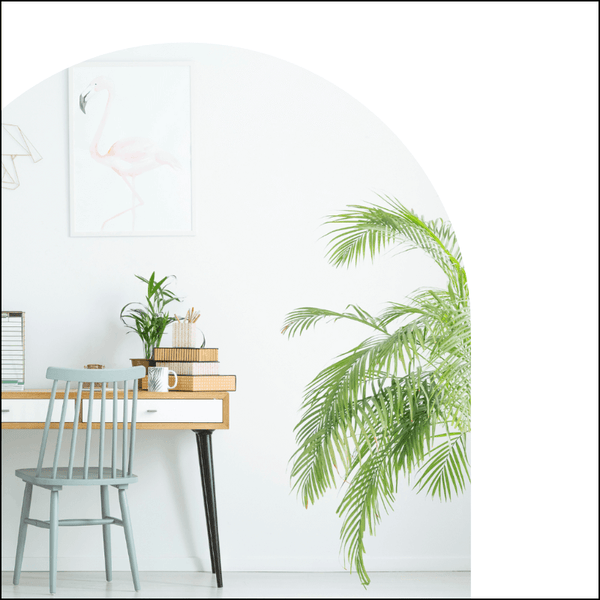At virtue + vice, I am all about teaching my students how to work smarter instead of harder. Do you know that person that looks like they are literally doing it all? And, it feels like what they accomplish in a day; takes you an entire week to get done? The truth is, they aren’t any better or more brilliant at what they do – what they have is a tool kit that allows them to efficiently GSD (get stuff done). So, here is my list of the top 13 tools you and your sustainable fashion startup need that will leave people wondering, “wow, how are they so productive?”
But, before we get started.
Have you heard about the totally FREE LIVE GROUP COACHING CALLS that are happening live, only on September 27 and September 28, 2022?
This is your chance to get all of your fashion startup questions answered by me – for free!
Plus, when you show up live you’ll get a copy of my Startup Tool Kit – with over 80 different startup resources that you need to know about as a fashion entrepreneur.
Because this is live, and I will be providing individual coaching, space is extremely limited. So, make sure to sign up asap while you still can.
Calendly – Scheduling Meetings

As a sustainable fashion startup founder, you can probably relate to this situation.
You crafted the perfect cold email, pressed send, not expecting anything back, and then, by some miracle, got a reply saying yes, I am interested, with them asking to schedule a meeting.
Then, the conversation might then go a little something like this.
Does Tuesday at 2 pm work for you? No, Tuesday is slammed for me. How about Wednesday? Wednesday I need to take my dog to the vet and get my hair done, how about next week?
Then things kind of fizzle. Maybe one of you forgets to offer what feels like the 20th time and date to connect. A few weeks go by, and you reach out again; by this point, the momentum is gone, and maybe you don’t get a response.
Was this meeting with a buyer at your dream wholesale account, an editor at a publication you have been dying to get featured in, or someone else that might just be able to help you boost your business to the next level?
Some friendly free advice – you can not let essential meetings that could change your business slip through the cracks. As a fashion startup, every meeting is a world of opportunity that can help boost your brand to the next level. So, to make meeting scheduling easy, you need a service.
We are all busy people, and sometimes finding common times to connect can feel impossible. That’s why you need to make it easy to schedule meetings with you.
Hello Calendly.
Their tagline literally says it all “Calendly helps you schedule meetings without the back-and-forth emails.”
I love Calendly and have been using the service for years. When you want to have a meeting with someone, you send them a link to your calendar, and they can choose a time you are both free.
Calendly integrates with Google Calendar, so if you have something else scheduled for that time, Calendly will automatically make that time unavailable for meetings – no double bookings here.
You can also set meeting parameters. Like maybe you want to schedule all meetings for 30 minutes, or perhaps you want to keep a 15-minute buffer between all appointments to give yourself a break in between commitments.
And, there is more. You can set up meeting alerts, so you never miss a meeting. Calendly also integrates with Zoom, the live meeting platform, which I am sure by now you have a love/hate relationship.
Calendly is your meeting personal assistant.
As a sustainable fashion startup, it often feels like there are not enough hours in the day. By automating your meeting scheduling and reminders, you can free up extra time to do the most critical tasks.
Pricing
There are three levels of membership
Basic – $0
Premium – $8 per month
Pro – $12 per month
Personally, I have the free basic plan, and it has always done exactly what I need.
Milanote – Keeping Designs Organized
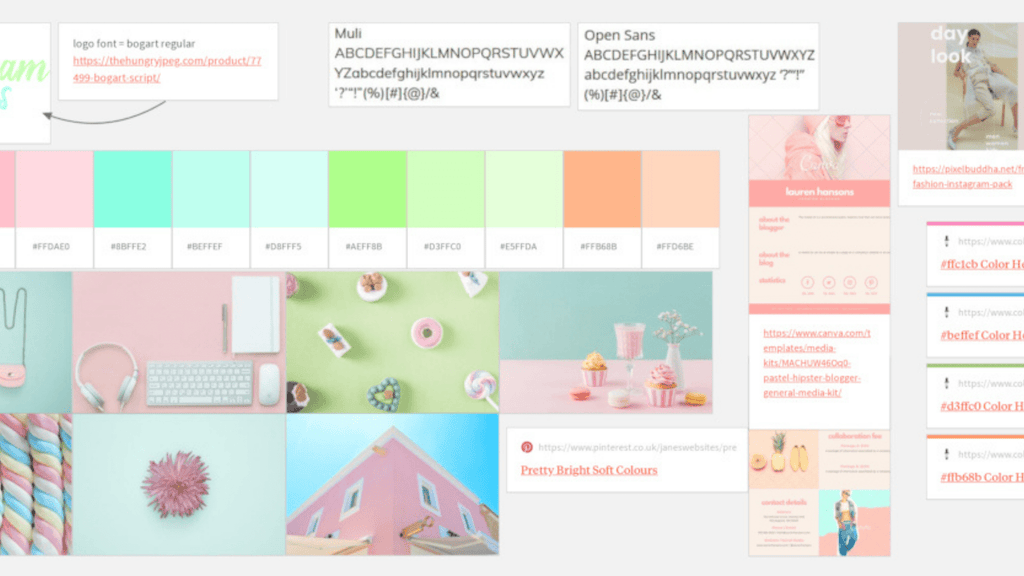
As a sustainable fashion startup founder, you are definitely a creative person. Even if you don’t consider yourself a creative, remember, fashion by nature is very creative.
Milanote is a tool for organizing creative projects into beautiful visual boards. It feels like working on the wall in a creative studio – visual, tactile, and sometimes a little bit messy. And, Milanote is an excellent fit for designers who work in teams remotely. You can also share your boards with people outside of your team.
The world of fashion is very visual, so tools like basecamp are sometimes not the best fit for your business’s needs. I love to use Milanote to organize all of the fashion trends I am seeing for the season. I also have a board of different textiles and materials that I want to keep top of mind, like images from supply chain partners of natural fibers and organic cottons.
Pricing
Free – with limited boards and storage
Per person – $9.99 per month with unlimited boards and storage
Per team (up to 10 people) – $49.99 per month
I go with the free version because it forces me to delete old projects if I want to start new ones. I am one of those people who always has about 50 web browser tabs open, and the only time I close them out is when my computer starts to malfunction. Keeping myself on the free plan actually helps me to stay on task and more organized.
Trello – Team Communication And To-do Lists
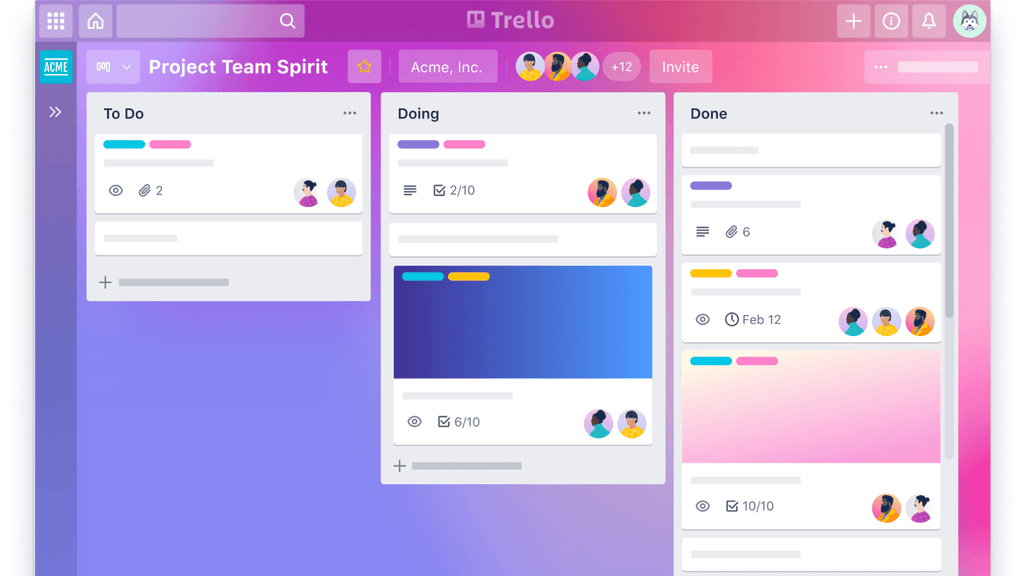
I never thought I would become a list person. For me, making lists felt like a total waste of time. Why would I sit around writing a list when I could be working and actually getting stuff done?
Now, after almost five years in business, I am pro-list. And, I really hope you are too. At a certain point in your sustainable fashion startup journey, everything is just going to feel like way too much. You will have so many things you need to do that you don’t know where to start. And that is usually where procrastination kicks in. Instead of doing everything, you end up doing nothing – at least, that’s how it works for me.
When you have a list and can physically see exactly what you need to do, things just feel clearer. Then, when you start actually checking off what needs to be done, you begin to feel empowered, productive, and ultimately motivated.
When you are starting, and it’s just you as a solo-pruner, maybe all you need is a trusted notebook. But, I promise you this, as you grow and start to hire your first team members or freelancers – everyone is going to need access to that notebook to be on the same page.
And that is where Trello comes in handy. It works like a digital post-it board. Every task gets its own note, and you can mark them with color codes, due dates, and even set reminder alerts. Then as the task moves through your processes, from needs to get done, to getting done, to complete, you can move the post-it to the appropriate stage in the project.
This is how I set up my Trello.
I have a board for every client. This way, I can open the client’s board and see exactly where all of their development and production are at.
I also have another set of boards that I share with all my supply chain and factory partners. We use it so we are all on the same page and know exactly where we are with every project.
Even if you are not working with teams, Trello is a great way to digitalize your to-do list, and they even have an app to keep you productive while you are on the go.
Pricing
Free
Business-class – $10 per month, good for teams up to 100 and with lots of bonus features
I use the free version. For now, it’s more than enough for what my partners and I need.
Shopify – Setting Up Your Online Shop
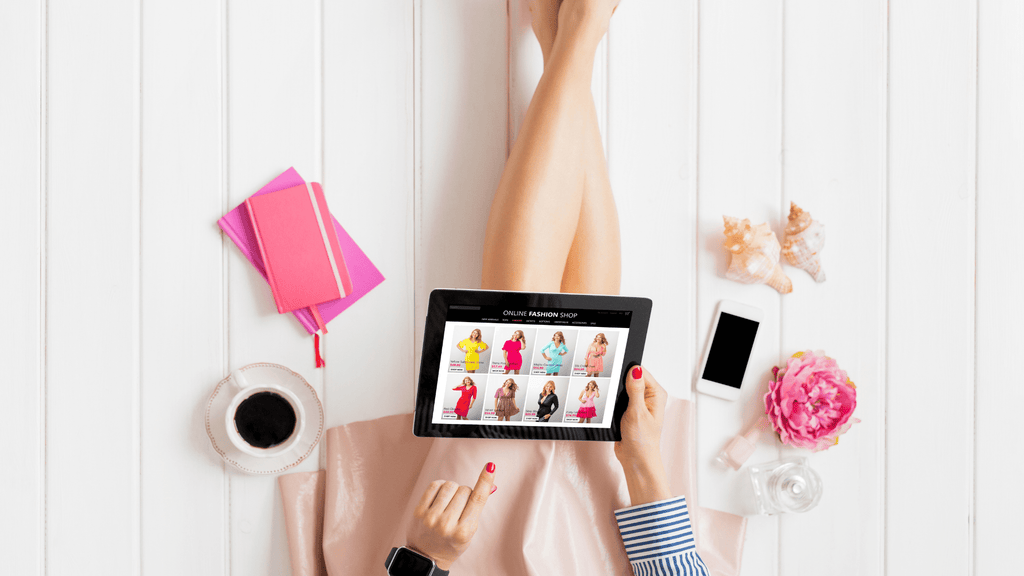
I have tried almost all of the website hosting platforms out there – WordPress, Wix, Squarespace, and of course, Shopify. Personally, IMO, when it comes to starting an online store, nothing can beat Shopify.
This blog post that you are reading right now is on my Shopify store!
Shopify makes running a business easy because their platform is more than just a place to build your website. What makes Shopify unique is the back end, meaning all the stuff that your customers can’t see.
First off, they make inventory management easy. Inventory management is something you will need to be on top of when you launch your store. This is for two reasons. The first is you don’t want to sell out of something and have a bunch of angry customers who can’t get their clothes. The second is, as you grow, you will have to start making re-orders with your factory – meaning ordering more inventory of the items that are selling well. Shopify allows you to see your sales trends and how much you currently have in stock to enable you to accurately forecast how much more you will need.
Shopify also makes payments and returns super easy. They even have an integration with Square, the credit card swipe machine you can use for in-person selling. The first time I ever had a return, I panicked. I was so worried about how I would refund the customer. Well, all that worry was literally for nothing because all I had to do was click a button, and Shopify took care of the rest.
Klaviyo – Go To Email Marketing Tool

If you are a sustainable fashion startup that cares about sales (I hope you do), you might have heard about building funnels.
If not, funnels are an email marketing technique to continue to market to your customers through email blasts. In Launch My Conscious Line we go super in-depth into how to build funnels that convert (read, result in customers placing orders).
But, to do all that you need an email service provider. What these providers do is allow you to send automated emails to different customer groups. You can send emails based on your sign-up list or based on customer behavior. Think emails like, because you bought this, you might also like this – all totally automated, so it’s no extra work for you. Pretty cool, right?
And right now, my favorite email service provider is klaviyo. If you are just starting and are on a budget, I would try Mailerlite. Mailerlite is a fraction of the price of klaviyo. But, they are perfect for a clothing startups basic email needs. If all you are looking to do is set up a basic email welcome funnel, start with Mailerlite. When you are ready to take things to the next level, that’s when I recommend making the switch to klaviyo.
Canva – DIY Graphic Design

I use Canva for literally everything. Seriously I do not know what I would do without it. From creating look books to resizing images for my website to the little infographics I make for some of my blog posts – I do it all on Canva.
Canva is hands down the one tool I don’t think I could service a day without. I love it so much I even sprang for the paid Pro version. (If you haven’t noticed I usually opt for all things free).
The paid version has an editor that allows you to remove the background of your images. This makes it so easy to edit product photos – goodbye overpriced and often flakey Upwork editors.
The Pro version also has thousands of stock photos to choose from, eliminating the need for a separate Shutterstock subscription.
If you are just getting started, I would recommend opting for the free version. I used the free version for about three years before upgrading to Pro, which will run you $12.99 per month.
Of all of the tools I am recommending on this list, Canva is the one to try first. Seriously, I don’t know a small business that doesn’t use Canva for its design work. Graphic artists must hate it because it is a serious DIY money saver.
Snapseed + Lightroom – Photoediting
Both Snapseed and Lightroom are probably the two most used apps on my phone, after the endless scrolling I do on Instagram.
Snapseed
I use Snapseed to enhance my images to a much more professional quality quickly. And, Snapseed is free!
Here is what I do to almost all of my photos. First, I bump up the brightness. Add a tiny bit of contrast. Then I increase the saturation and the ambiance. Then I finish the editing by increasing the highlights and decreasing the shadows. The whole thing takes me about 30 seconds – but it makes a huge difference.
Check out this before and after of me walking along the washing area of a block print house in Bagru.
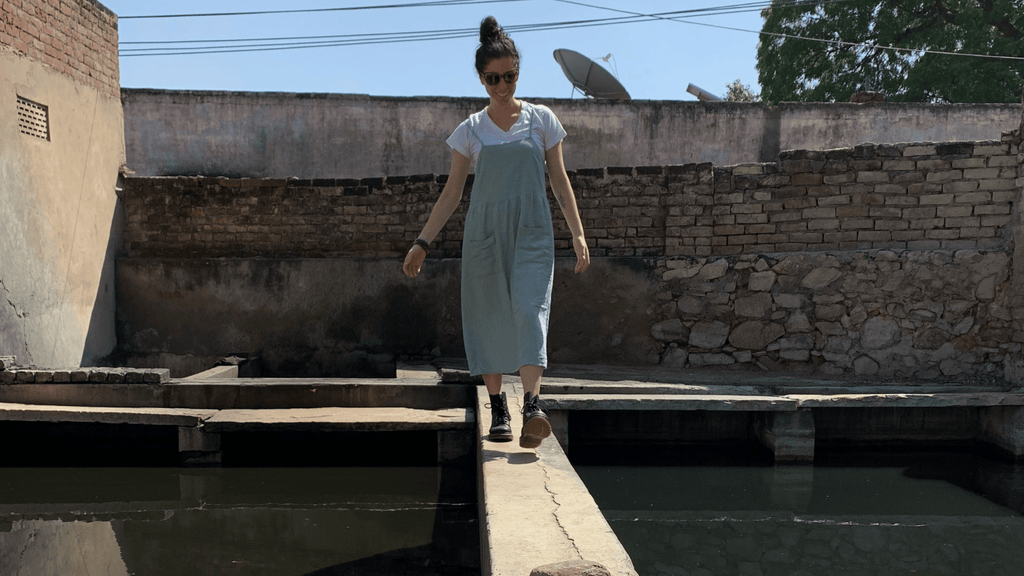
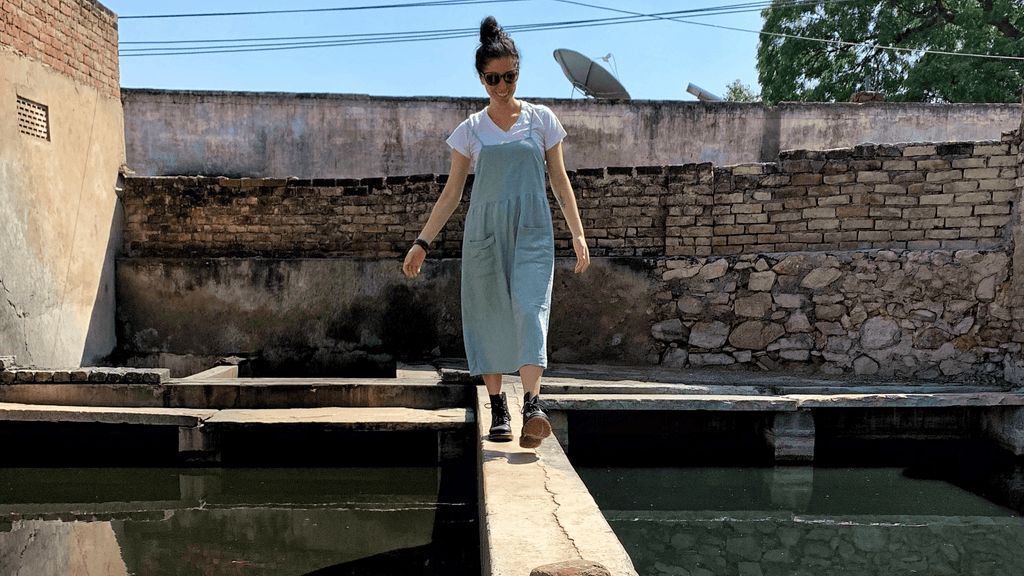
Lightroom
Now for my fancy influencer style filters, I use Lightroom, which costs $9.99 per month. The cool thing about Lightroom is that you can grab other people’s filters and save them as presets. I get my filter packs from the app FLTR. 12 months of access to the filters is $29.99, but sometimes you can catch a deal and get 12 months for only $14.99. If you want to pay monthly it’s $9.99 per month.
Here is that same photo, now with a FLTR setting that I popped on using Lightroom.
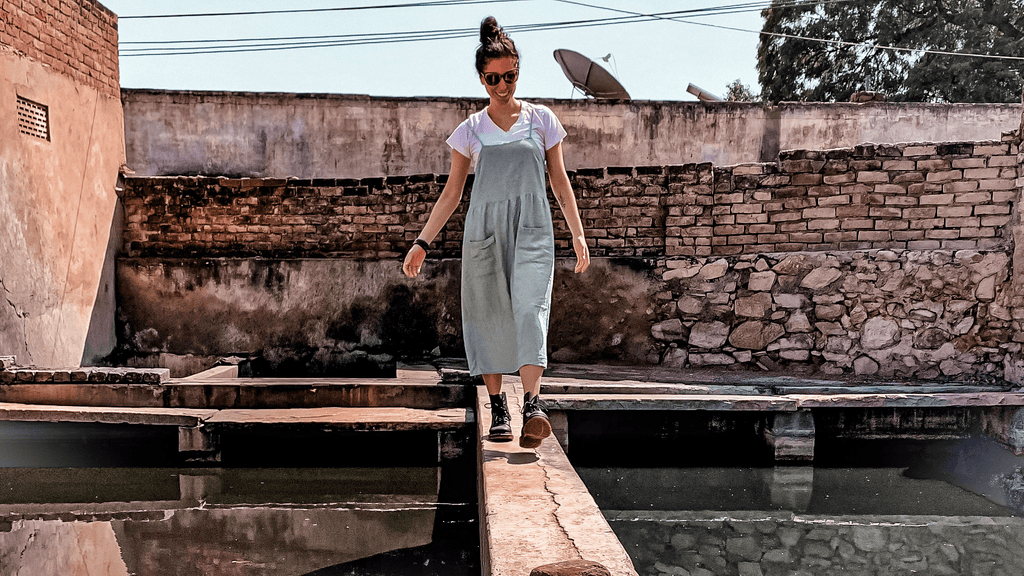
Now all of this might sound a little expensive – almost $20 per month for photo editing apps – but IMO it’s totally worth it. A freelancer will cost you more than $20 per photo. And, when you are a small sustainable fashion startup, you need to think strategically. For $20 you can edit all of your social media content yourself instead of paying hundreds of dollars for a “professional” who quite honestly is probably using these same exact apps to get the job done.

Have you heard of batching? Batching is a strategy used by many to increase productivity. People who use batching will do all of their work for the month in just a few days.
So, three days out of the month, I might sit down and just bang out blog post after blog post and create enough content for a month or two. Then on another day, I might edit hundreds of photos. For the next few days, only write captions. Then choose one day a week to only focus on sales. With batching, you pick one thing that needs to get done regularly and do it all in a few days. And, by doing this, it is supposed to save you time.
I am day to day for a lot of my work, but I have found that batching is the most time-efficient way to be productive for things like social media posting. And, Facebook’s Creator Studio makes it easy to set all of your content at the start of the month and have the platform auto-post for you – aka set it and forget it.
While Instagram is an essential part of your brand’s strategy, let’s get real, you have more important things to do as a sustainable startup clothing brand than spend your day scrolling.
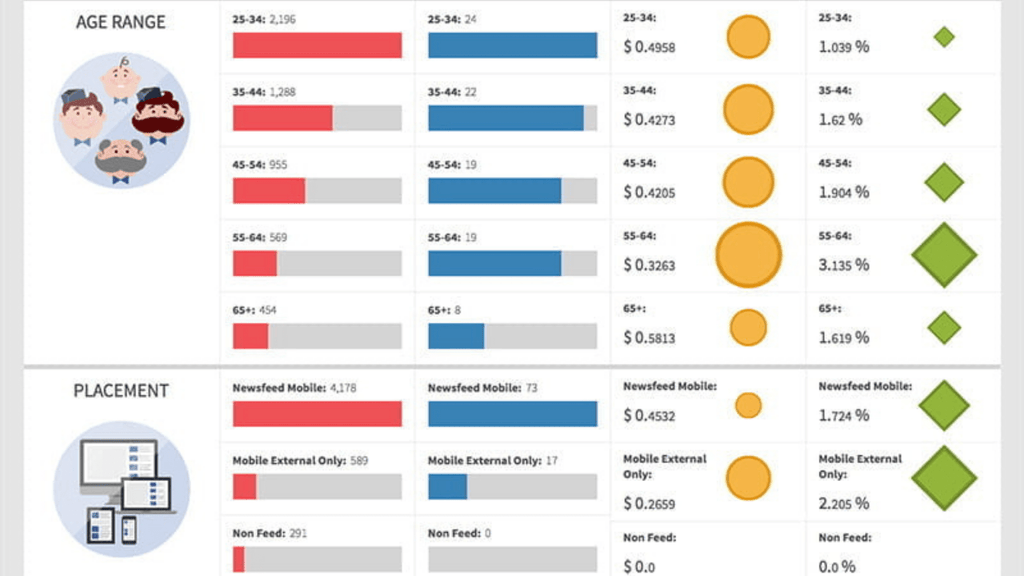
Make me a promise right now. Please, please, please, do not hire a Facebook advertising agency to help you boost your sales.
Most of these agencies will promise you significant results, take your cash, and leave you with a list of excuses as to why they couldn’t help you sell your product when it’s all over.
For the past five years, every person in this industry that I know I ask the same questions – do you know an advertising firm that can help sustainable fashion startups? And they all say, if I did, I would be using them myself.
Now, if you have 10k per month to invest in ads, that is a totally different story.
But, most of you small sustainable fashion startups out there will only have a few hundred dollars max to gamble on ads.
And, for that reason, I suggest the DIY route with AdEspreso and AdRoll. AdEspresso is helps you create and optimize Facebook ads, and AdRoll is the same type of tool, except it specializes in google ads.
Personally, when I look at Facebook’s business manager or try to create an advertisement through google, I get a headache. There is just so much going on in the back end to set up those campaigns.
Then you have to think about all the testing, split testing, and how to optimize your ads.
AdEspresso and AdRoll make this all super easy. So easy, I actually found I had better results doing it myself with their automated platforms than I was having with the ad agency that I was paying.
AdEspresso starts at $49 per month, and AdRoll has a free version and a paid version for $19 per month. Yes, $70 a month in subscriptions (read $804 per year) can be a lot for a sustainable fashion startup; but it is a drop in the bucket compared to the thousands of dollars that an agency will charge you per month.
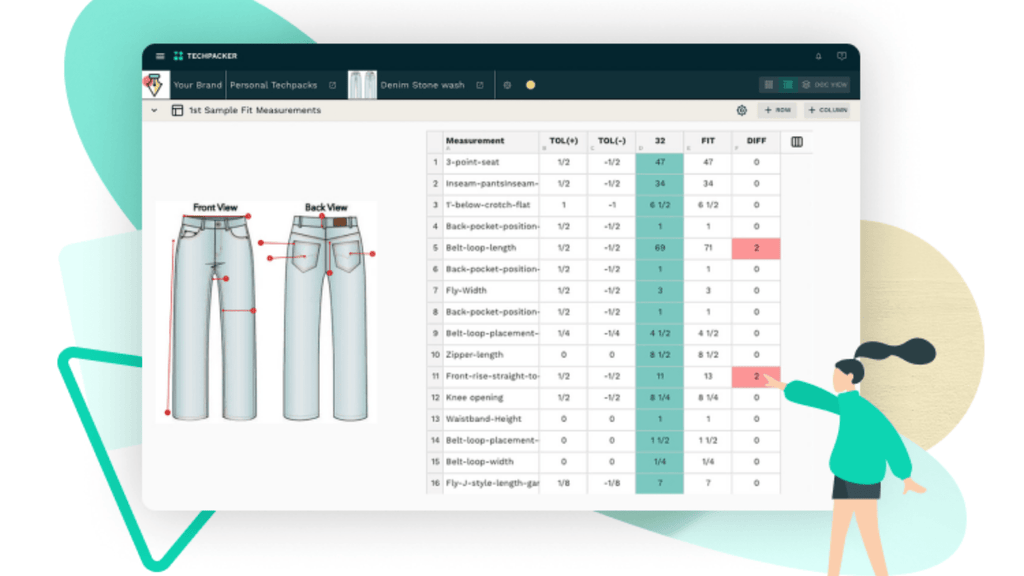
These last two tools are very niche to the fashion industry and are a total time saver if you want to create professional industry documents but have no idea how.
Techpacker
You have probably heard me talk about Techpacker before; I am a huge fan. Techpacker is a platform that makes creating tech packs for your factories super easy. They have a drag and drop interface, and their pre-built templates help ensure that you don’t forget any of the crucial details.
Techpacker has pricing ranging from $49, $69, and $89 per month. And, IMO, it’s worth it. A tech pack from a professional could cost you anywhere between $100 and $300.
And, get this, in the decade I have been in the fashion industry, I have never seen someone create a totally perfect techpack. When tech packs are done incorrectly, they can actually end up costing you not only time to re-do them but also a lot of extra money.
When starting out in the sustainable fashion industry, my advice is always to save cash and go the DIY route.
Brandboom
This is another DIY industry tool. Brandboom allows you to create buyer-ready line sheets to help you sell your line to wholesale accounts and fashion retailers. Over the past year, they have even expanded their offering and created an online marketplace where buyers can meet new brands on the platform and place orders directly.
Plans for Brandboom range from free to $66, and $125 per month. But, when you consider the thousands of dollars that Jour and NuOrder are, Brandboom is a much more reasonable place to get started for startup fashion brands.
One more thing to mention about Brandboom and Techpacker – they take two items that are notorious for paper waste (seriously, sometimes I feel like I am responsible for the deforestation of 1/2 the Amazon based on the insane amount of techpacks and line sheets I have printed out in my life) and make them digital – helping your brand have an even smaller environmental impact. Hey, every little bit counts and helps.
What Do You Think?
And there you go, those are my top 13 tools for startup fashion brands. I wish someone had told me about all of these tools when I was just starting out. On the plus side, many of them are free or have free versions, to help you save even more cash and become even more productive.
Do you have business tools that you can’t live without? Please share them in the comments!
